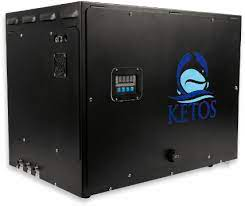Remotely Measure Levels of ORP in Water
Monitoring Water for Oxidation Reduction Potential (ORP) With KETOS SHIELD
Accurately Measure Levels of ORP in Water
Download our KETOS SHIELD overview to learn how:
- Users can enable an early-warning system for specific water testing parameters to measure, manage, and monetize water as a resource
- KETOS eliminates the need for manual labor, third-party lab analysis, multiple analyzers, or equipment calibration
- Water can be tested at regular pre-determined intervals to continuously provides water operators with EPA-compliant and lab-accurate information when they need it
- Actionable insights and predictive intelligence via insightful customizable dashboards help make water quality monitoring (and other related tasks) more transparent and efficient
Learn To Automate Oxidation Reduction Potential (ORP) Testing In Water With Lab-Accurate Results in Real-Time
"*" indicates required fields
Testing for Oxidation Reduction Potential (ORP) in Water
 KETOS SHIELD can monitor for ORP and water testing parameters in real-time. With KETOS, operators lower their up-front monitoring costs with our industry-leading $0-CAPEX subscription model that’s easy on even the tightest budget.
KETOS SHIELD can monitor for ORP and water testing parameters in real-time. With KETOS, operators lower their up-front monitoring costs with our industry-leading $0-CAPEX subscription model that’s easy on even the tightest budget.
KETOS SHIELD provides accurate, real-time monitoring for ORP and 30+ other water testing parameters as a fully-integrated water management solution. Monitoring your water is accessible via an interoperable, modular system that works within any existing water infrastructure, so organizations don’t have to disrupt production to gain better insights.
Why Monitor Water for ORP with KETOS
ORP, or Oxidation Reduction Potential, measures water’s ability to oxidize or reduce another substance. It’s a vital water testing parameter since ORP can indicate how sanitized or contaminated the water is. Water that is treated with a sanitizing agent for it to be safe (to consume or recycle) gives it a higher oxidation potential. When water operators monitor for ORP, they can monitor the effectiveness of the sanitizing agent and can adjust water treatment accordingly to ensure water quality.
ORP is a variable that is often used in food processing and water treatment as it is a good indicator that water is free from contamination and that it is safe to use, recycle, or consume. ORP levels can indicate to water operators the effectiveness of disinfectant and microorganism kill rates. Therefore, monitoring for ORP regularly will help water operators better understand the overall health of the water they use in processes or deliver to customers.
What are the Issues with Oxidation Reduction Potential in Water?
Oxidation-Reduction Potential (ORP) is a critical parameter in water quality management, reflecting the water’s oxidizing or reducing capacity. While ORP serves as a valuable indicator of water’s disinfection potential and redox conditions, deviations from optimal levels can lead to various challenges. Here are key issues associated with Oxidation-Reduction Potential (ORP) in water:
- Disinfection Efficiency: ORP is often used as a measure of a water treatment system’s ability to disinfect and eliminate pathogens. However, fluctuations in ORP levels can affect disinfection efficiency, leading to inadequate microbial control and increased risks of waterborne diseases. Low ORP values may indicate insufficient disinfection, while excessively high values may suggest over-chlorination or ineffective treatment processes.
- Corrosion and Scale Formation: ORP levels influence the corrosion and scaling tendencies of water. Low ORP values may promote corrosion of metal pipes, fittings, and plumbing fixtures, leading to leaks, pipe failures, and infrastructure damage. Conversely, high ORP levels can accelerate scale formation, reducing water flow rates, impairing equipment performance, and increasing maintenance costs for water utilities and consumers.
- Aesthetic Issues: Deviations in ORP levels can impact water aesthetics, affecting its taste, odor, and appearance. Low ORP values may result in a stale or musty taste and odor, while high ORP levels can produce a metallic or chlorine-like taste. These aesthetic concerns can diminish consumer satisfaction and confidence in water quality, leading to decreased water consumption and compliance issues.
- Microbial Growth: ORP levels influence microbial growth and biofilm formation in water distribution systems. Fluctuations in ORP may create favorable conditions for bacterial proliferation, leading to biofilm accumulation on pipe surfaces and increased risks of microbiological contamination. Controlling ORP levels is essential to prevent microbial regrowth and maintain water quality and safety.
- Treatment Challenges: Managing ORP levels in water treatment processes requires careful monitoring and control to optimize disinfection efficacy and minimize corrosion and scale formation. Treatment methods such as chlorination, ozonation, and UV disinfection can influence ORP levels, requiring adjustments based on water chemistry, temperature, and flow conditions. Balancing ORP values with other water quality parameters is crucial for achieving optimal treatment outcomes.
- Regulatory Compliance: Governments and regulatory agencies may establish guidelines or standards for ORP levels in drinking water to ensure adequate disinfection and water quality. Compliance with these regulations requires water utilities and treatment facilities to monitor ORP levels regularly, adjust treatment processes as needed, and maintain records to demonstrate compliance with regulatory requirements.
Causes of Oxidation-Reduction Potential (ORP) in Water
Oxidation-Reduction Potential (ORP) in water is influenced by various factors, primarily related to the presence and concentration of oxidizing and reducing agents. Natural processes such as photosynthesis, respiration, and decomposition contribute to fluctuations in ORP levels in aquatic environments. For example, the presence of organic matter undergoing decomposition can result in a decrease in ORP due to the release of reducing agents. Conversely, the presence of oxygen and other oxidizing agents can increase ORP levels. Human activities also play a significant role in altering ORP in water. Pollution from industrial discharges, agricultural runoff, and wastewater effluents can introduce chemicals that influence ORP levels, impacting water quality and ecosystem health. Additionally, water treatment processes such as chlorination can affect ORP levels by introducing oxidizing agents to disinfect water supplies. Understanding the causes and dynamics of ORP in water is crucial for assessing water quality, managing pollution, and maintaining healthy aquatic ecosystems.
Acceptable Levels of Oxidation-Reduction Potential in Water by Industry
In water treatment across various industries, maintaining optimal levels of oxidation-reduction potential (ORP) is crucial for ensuring water quality and safety standards. Acceptable ORP levels vary depending on the specific industry and its requirements. For instance, in drinking water treatment, the acceptable ORP levels typically range between 200 to 400 millivolts (mV), whereas in swimming pool sanitation, levels may range from 650 to 750 mV. Industrial processes like food and beverage production often require ORP levels between 350 to 450 mV for effective disinfection. Conversely, in wastewater treatment, higher ORP levels of around 650 to 750 mV are necessary to effectively oxidize contaminants. Understanding these industry-specific standards is essential for implementing appropriate water treatment protocols.
| Industry | Acceptable ORP Levels (mV) |
|---|---|
| Drinking Water Treatment | 200 – 400 |
| Swimming Pool Sanitation | 650 – 750 |
| Food and Beverage Production | 350 – 450 |
| Wastewater Treatment | 650 – 750 |
How to Easily Monitor Water for ORP
Instead of measuring ORP with a meter that only measures a handful of conditions; the KETOS SHIELD is capable of mentoring dozens of water related issues — in real-time. Monitoring for ORP and dozens of other parameters has never been more seamless (or affordable).
Experience monitoring for ORP and numerous other parameters with KETOS. Our platform offers effortless integration and user-friendly interfaces, ensuring efficient data collection and analysis. With KETOS, empower your organization with cost-effective solutions for comprehensive water quality management and regulatory compliance.
Whether you’re checking for potassium in drinking water, orthophosphates in stormwater, or pH in the pharmaceutical industry, KETOS’ automated water monitoring saves time and reduces regulatory issues.
What Water Quality Parameter Do You Test Most Often?
The KETOS SHIELD remotely monitors dozens of water quality parameters. Which one do your water operators test most often?
KETOS Awards
















About KETOS
KETOS is a fully integrated platform that combines hardware, software, connectivity, automated reporting, predictive analytics, and maintenance to automate water monitoring and testing. KETOS enables water operators to identify and solve mission-critical water efficiency and quality challenges in real-time, or before they happen through predictive algorithms, to ensure that water meets specific quality and safety standards.

